- Choosing the Right Watermelon Variety
- Climate
- Size
- Disease Resistance
- Flavor
- Preparing the Soil for Growth
- Providing Adequate Sunlight
- Choosing the Right Location
- Sunlight Requirements
- Protecting the Plant from Extreme Heat
- Watering the Watermelon Plant
- 1. Watering frequency
- 2. Deep watering
- 3. Mulching
- 4. Time of day
- 5. Monitoring plant needs
- Protecting the Plant from Harsh Climate
- 1. Choose the right location
- 2. Select the right watermelon variety
- 3. Start seeds indoors
- 4. Use row covers
- 5. Mulch the soil
- 6. Build a temporary greenhouse
- 7. Keep the plants well-watered
- 8. Protect from pests
- 9. Monitor temperature fluctuations
- 10. Provide support
- Pruning and Training the Plant
- 1. Removing Side Shoots
- 2. Supporting the Main Stem
- 3. Removing Excess Foliage
- 4. Training the Vines
- 5. Pruning Runners
- 6. Managing Suckers
- 7. Regular Inspection
- 8. Pruning Timing
- 9. Hygiene Practices
- Fertilizing for Maximum Growth
- 1. Soil Testing
- 2. Nitrogen
- 3. Phosphorus
- 4. Potassium
- 5. Micronutrients
- 6. Application Schedule
- 7. Watering After Fertilizer Application
- Harvesting the Giant Watermelon
- 1. Monitor the Ripeness
- 2. Prepare the Tools
- 3. Choose the Right Time
- 4. Cut the Stem
- 5. Lift and Transport
- 6. Store Properly
- “Question-Answer”
- Is it possible to grow a giant watermelon in a harsh climate?
- What are some tips for growing a giant watermelon in a harsh climate?
- Which variety of watermelon is best suited for growing in a harsh climate?
- How much sunlight is required for growing a giant watermelon?
- What are the steps involved in growing a giant watermelon in a harsh climate?
- How long does it take for a giant watermelon to reach maturity?
- “Video” How to grow watermelon/step by step on growing watermelon
Growing watermelons can be a challenging task, especially in harsh climates where the conditions are not ideal. However, with the right techniques and a little bit of patience, it is possible to grow a giant watermelon that will impress everyone.
First and foremost, it is important to choose the right variety of watermelon that is suitable for your specific climate. Look for varieties that are known for their ability to withstand harsh conditions, such as heat, cold, or drought. These varieties are often bred specifically for such climates and will have a greater chance of success.
Once you have selected the right variety, it is time to prepare the soil. Watermelons thrive in well-drained soil that is rich in organic matter. It is recommended to amend the soil with compost or well-rotted manure to improve its fertility. Additionally, make sure that the soil has a pH level between 6 and 7, as watermelons prefer slightly acidic conditions.
After preparing the soil, it is time to plant the watermelon seeds. Plant the seeds in rows or hills, with each hill consisting of 2-3 seeds. Make sure to space the hills or rows at least 6 feet apart to allow enough room for the vines to spread. Water the seeds thoroughly after planting and keep the soil moist throughout the growing season.
To encourage the growth of a giant watermelon, it is important to provide the plants with optimal conditions. This includes providing them with full sun exposure, at least 8 hours per day. Additionally, make sure to provide adequate water and nutrients to the plants throughout the growing season. Consider using a slow-release fertilizer or organic compost to provide the watermelons with a constant source of nutrients.
Finally, as the watermelons start to grow, it is important to monitor their progress and take the necessary steps to prevent disease and pests. Applying a layer of straw or mulch around the plants can help to suppress weeds and reduce the risk of fungal diseases. Additionally, keep an eye out for common pests such as aphids or cucumber beetles and take appropriate measures to control them.
Overall, growing a giant watermelon in a harsh climate may require some extra effort and attention, but it is definitely possible with the right techniques. By choosing the right variety, preparing the soil, providing optimal conditions, and taking preventive measures against disease and pests, you can enjoy the satisfaction of growing your very own giant watermelon.
Choosing the Right Watermelon Variety
When it comes to growing a giant watermelon in a harsh climate, choosing the right variety is crucial. Not all watermelon varieties can withstand extreme temperatures or resist diseases, so it’s important to select a variety that is well-suited for your climate.
Here are some factors to consider when choosing the right watermelon variety:
Climate
Different watermelon varieties thrive in different climates. If you live in a harsh climate with extreme temperatures or a short growing season, look for varieties that are specifically bred to tolerate these conditions. These varieties are often labeled as “heat-tolerant” or “cold-tolerant” and are more likely to produce better results in challenging climates.
Size
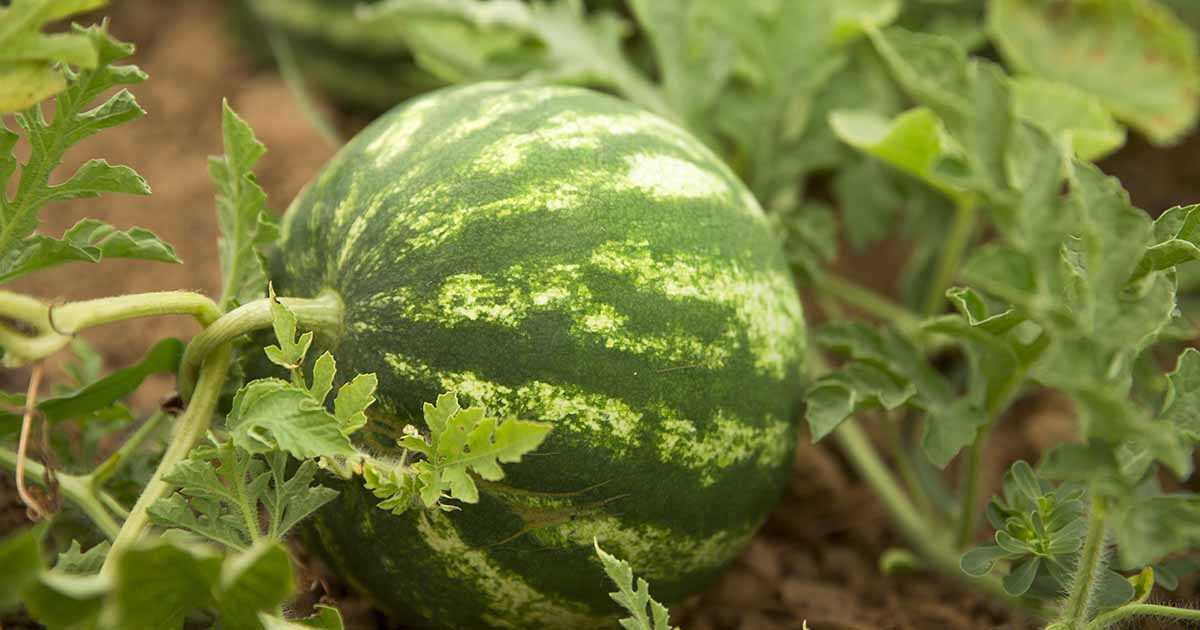
If you’re aiming to grow a giant watermelon, choose a variety that is known for producing large fruits. There are specific watermelon varieties bred for their size and weight, so look for those labeled as “giant” or “jumbo.” These varieties usually require special care and attention, but they have the potential to grow massive watermelons.
Disease Resistance
Watermelons can be susceptible to various diseases, such as powdery mildew, fusarium wilt, or anthracnose. To increase your chances of a successful harvest, select a variety that has good disease resistance. These varieties are more likely to withstand common watermelon diseases and are less likely to be affected by them.
Flavor
While size and disease resistance are important factors to consider, don’t forget about flavor! After all, what’s the point of growing a giant watermelon if it doesn’t taste good? Look for varieties that are known for their delicious, sweet flavor. You can find this information from seed catalogs or by reading reviews from other gardeners.
In conclusion, choosing the right watermelon variety is essential for growing a giant watermelon in a harsh climate. Consider factors such as climate suitability, size, disease resistance, and flavor when selecting the right variety for your garden. With the right choice, you’ll increase your chances of a successful harvest of a delicious and massive watermelon!
Preparing the Soil for Growth
Before starting the process of growing a giant watermelon in a harsh climate, it is important to properly prepare the soil. The right soil conditions are crucial for the successful growth of the plant. Follow these steps to ensure your soil is ready:
- Test the soil: Start by testing the pH level of your soil. Watermelons prefer slightly acidic soil with a pH range between 6.0 and 6.8. Use a soil testing kit available at gardening stores or send your soil sample to a local agricultural extension office for testing.
- Amend the soil: Based on the pH test results, you may need to amend the soil to reach the ideal pH level. If the pH is too high, add sulfur to lower it, and if it is too low, add lime to raise it.
- Loosen the soil: Watermelons require loose and well-draining soil. Use a garden fork or a tiller to loosen the soil to a depth of at least 12 inches. This will help the roots to penetrate easily and access nutrients and water.
- Add organic matter: Incorporating organic matter, such as compost or aged manure, into the soil will improve its fertility, drainage, and moisture-retention capacity. Spread a layer of organic matter over the loosened soil and mix it in thoroughly.
- Remove weeds and rocks: Clear the area of any weeds, rocks, or debris that may hinder the growth of the watermelon plants. Weeds can compete for nutrients and water, while rocks can impede root development.
- Level the soil: Use a rake or a garden hoe to level the soil surface. This will ensure even water distribution and prevent pooling or runoff.
By following these steps to prepare the soil, you will create optimal conditions for growing a giant watermelon in a harsh climate.
Providing Adequate Sunlight
In order to grow a giant watermelon in a harsh climate, it is crucial to provide the plant with adequate sunlight. Sunlight is essential for the photosynthesis process, which helps the plant produce energy and grow.
Choosing the Right Location
When selecting a location for your watermelon plant, it is important to choose a spot that receives full sun throughout the day. Ideally, the plant should receive at least 6-8 hours of direct sunlight every day. Avoid planting it in shaded or partially shaded areas, as this can adversely affect its growth and yield.
Sunlight Requirements
Watermelon plants require a significant amount of sunlight to thrive. They are considered sun-loving plants and need ample exposure to the sun’s rays to develop properly. Without adequate sunlight, the plant may become weak, stunted, and produce small fruits.
Here are some tips to ensure the watermelon plant gets enough sunlight:
- Clear any obstacles or structures that may cast shadows on the plant.
- Prune nearby trees or bushes that may block the sun.
- Position the plant in a location that has a southern exposure to maximize sunlight exposure.
- Avoid planting the watermelon near tall buildings or structures that may shade the plant.
Protecting the Plant from Extreme Heat
In a harsh climate, excessive heat can be a challenge for watermelon plants. While they require sunlight, they can also suffer from heat stress if not protected adequately.
Here are some tips to protect the watermelon plant from extreme heat:
- Provide a shade cloth or create a shade structure to protect the plant during the hottest parts of the day.
- Water the plant deeply and regularly to ensure it stays hydrated and can withstand the heat.
- Apply a layer of mulch around the base of the plant to retain soil moisture and regulate temperature.
- Consider using a drip irrigation system to deliver water directly to the plant’s root zone, minimizing water loss through evaporation.
By providing adequate sunlight and taking steps to protect the plant from extreme heat, you can increase the chances of growing a giant watermelon in a harsh climate. Remember to monitor the plant closely and make adjustments as needed to ensure its healthy growth and development.
Watering the Watermelon Plant
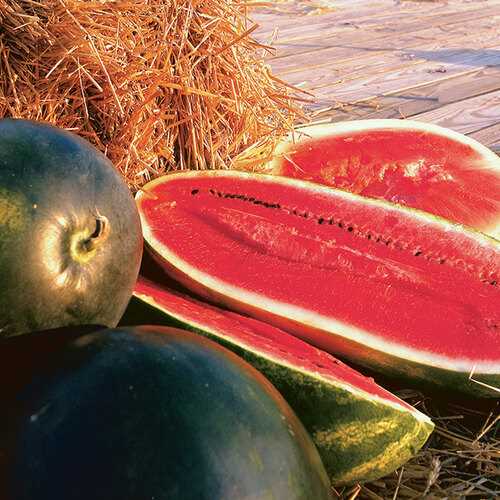
Watering is a crucial aspect of growing a giant watermelon, especially in a harsh climate. Adequate water supply ensures that the plant remains hydrated and can develop large, juicy fruits. Here are some key points to keep in mind when watering your watermelon plant:
1. Watering frequency
Watermelon plants require a consistent and regular water supply, especially during the hot summer months. Aim to water the plants at least once every five to seven days, or whenever the top inch of soil feels dry to the touch.
Tip: Avoid overwatering, as it can lead to root rot and other diseases. The goal is to keep the soil moist, but not waterlogged.
2. Deep watering
When watering, ensure that you apply enough water to penetrate deep into the soil. Shallow watering only moistens the top layer, which can result in shallow root formation. Use a soaker hose or drip irrigation system to water the plants slowly and deeply.
Tip: A general rule of thumb is to provide about 1-2 inches of water per week, depending on the weather conditions and soil type.
3. Mulching

Applying a layer of organic mulch around the watermelon plants can help conserve moisture and regulate soil temperature. Mulch also prevents weed growth, which can compete with the watermelon plant for water and nutrients.
Tip: Use straw, wood chips, or dried leaves as mulch. Spread it around the base of the plant, leaving a small gap to prevent moisture buildup on the stem.
4. Time of day
Water your watermelon plants in the early morning or late afternoon to minimize water loss due to evaporation. Avoid watering in the evening, as wet foliage during cooler nights can promote fungal diseases.
Tip: If your area has hard water, consider using rainwater or filtered water to prevent the buildup of minerals in the soil.
5. Monitoring plant needs
Keep a close eye on your watermelon plant and monitor its water requirements. If the leaves start to droop or wilt, it may be a sign of dehydration. Adjust your watering schedule accordingly to ensure the plant remains well-hydrated.
Tip: Conduct a simple soil moisture test by inserting your finger into the soil up to the second knuckle. If it feels dry at that depth, it’s time to water.
By following these watering guidelines, you can help your watermelon plant thrive in a harsh climate and maximize its growth potential. Remember, providing consistent, deep watering is key to growing a giant watermelon.
Protecting the Plant from Harsh Climate
Growing a giant watermelon in a harsh climate can be challenging, but with proper protection, you can help your plant thrive and produce a healthy fruit. Here are some steps to protect your plant from adverse weather conditions:
1. Choose the right location
- Select a spot in your garden that receives maximum sunlight for at least 6-8 hours a day.
- Avoid areas prone to strong winds and excessive rainfall.
2. Select the right watermelon variety
Choose a watermelon variety that is known to be tolerant of harsh climates. Look for varieties that have a shorter growing season and are more resistant to disease and pests. Consult with local garden centers or experienced gardeners for recommendations.
3. Start seeds indoors
Begin germinating watermelon seeds indoors about 4-6 weeks before the last frost date in your area. This will give the plants a head start and help them become stronger before transplanting them outside.
4. Use row covers
Protect your young watermelon plants from cold temperatures and frost by using row covers. These covers are made of lightweight fabric and act as a barrier, trapping warmth around the plants.
5. Mulch the soil
Apply a layer of organic mulch, such as straw or wood chips, around your watermelon plants. This will help to retain moisture, regulate soil temperature, and suppress weed growth.
6. Build a temporary greenhouse
If the climate is particularly harsh, consider building a temporary greenhouse using transparent plastic or PVC pipes. This will provide additional protection against extreme weather conditions.
7. Keep the plants well-watered
Water your watermelon plants regularly, especially during dry spells. Ensure the soil remains moist but not waterlogged to prevent root rot.
8. Protect from pests
Install pest barriers, such as fences or netting, to keep away animals and insects that may damage your watermelon plants. Regularly inspect the plants for signs of pests or disease and take appropriate measures to protect them.
9. Monitor temperature fluctuations
Keep an eye on weather forecasts and take precautionary measures if the temperature is expected to drop dramatically. Use protective covers or bring potted watermelon plants indoors overnight if necessary.
10. Provide support
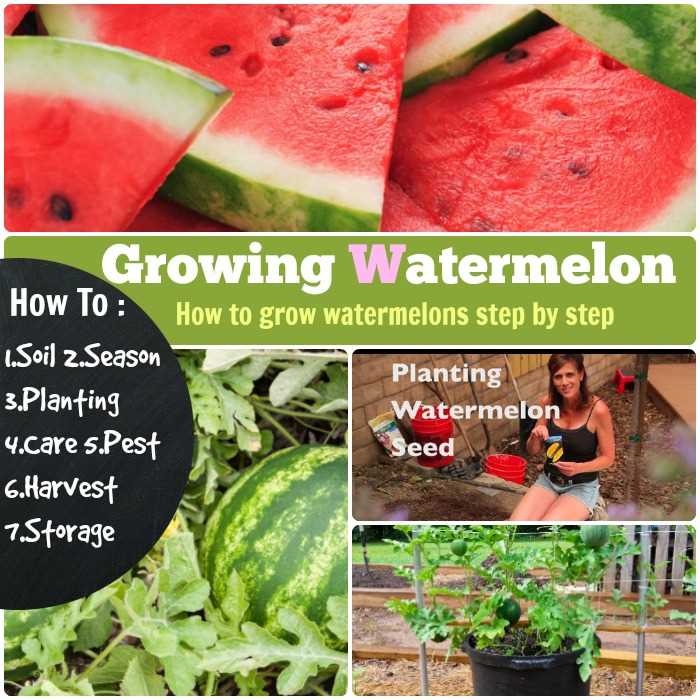
As your watermelon plants grow, provide support by using trellises, stakes, or cages to prevent them from being damaged by wind or heavy fruit.
By following these steps, you can help protect your watermelon plant from the harsh climate and increase your chances of growing a giant watermelon successfully.
Pruning and Training the Plant
Pruning and training the watermelon plant is essential for maximizing fruit production and ensuring a healthy plant. Here are some steps to follow:
1. Removing Side Shoots
Watermelon plants tend to produce side shoots that compete with the main stem for energy and nutrients. It is important to remove these side shoots to encourage vertical growth and direct energy towards fruit production. Use a clean pair of pruning shears to carefully cut off any side shoots that appear.
2. Supporting the Main Stem
Watermelon plants can become heavy once the fruits start to grow. To prevent the main stem from breaking under the weight, it is recommended to provide support. Use sturdy stakes or a trellis system to secure the main stem and keep it upright.
3. Removing Excess Foliage
Too much foliage can shade the developing fruits and hinder their growth. Regularly trim away any excess leaves and vines to allow for better air circulation and light penetration. This will also help reduce the risk of diseases caused by damp conditions.
4. Training the Vines
Watermelon vines have a tendency to sprawl across the ground, which can make them susceptible to diseases and pests. Consider training the vines to grow vertically by gently tying them to the support structure. This will help create more space, improve airflow, and make it easier to monitor and care for the plant.
5. Pruning Runners
Watermelon plants produce long runners that can drain energy from the main plant. Trim any excessive runners that are not contributing to fruit production to redirect nutrients towards the main stem and developing fruits.
6. Managing Suckers
Suckers are new shoots that emerge from the base of the plant. While they can contribute to overall plant vigor, they may also steal nutrients from the main stem. It is recommended to remove some suckers to maintain a balance between foliage growth and fruit production.
7. Regular Inspection
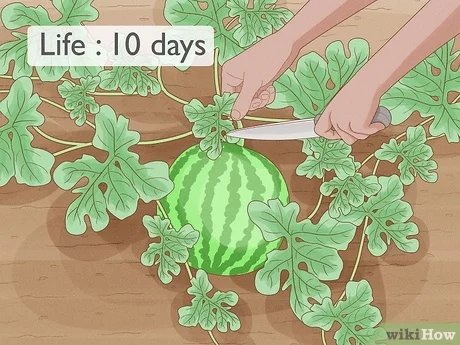
Regularly inspect the plant for any signs of diseases or pests. Remove any affected leaves or fruits to prevent the spread of infection. This will help maintain plant health and maximize fruit production.
8. Pruning Timing
Pruning should be done throughout the growing season, starting from when the plant is young. However, be cautious not to remove too much foliage or prune late in the season, as this can limit the plant’s ability to produce sugars and ripen the fruits.
9. Hygiene Practices
Always use clean pruning tools to prevent the spread of diseases. Sterilize your pruning shears with rubbing alcohol or a bleach solution before and after each use to avoid contaminating the plants.
By following these pruning and training techniques, you can help your watermelon plant thrive in a harsh climate and increase the chances of growing a giant, delicious watermelon.
Fertilizing for Maximum Growth
Proper fertilization is essential for achieving maximum growth and yield in your watermelon plants. Here are some guidelines to follow:
1. Soil Testing
Before planting your watermelon, it is important to test your soil to determine its nutrient content. This will help you determine the appropriate fertilizer to use.
2. Nitrogen
Nitrogen is a key nutrient for promoting vegetative growth in watermelon plants. It is recommended to apply a nitrogen-rich fertilizer, such as a 10-10-10 or 20-20-20 blend, at a rate of 1 pound per 100 square feet of planting area.
3. Phosphorus
Phosphorus aids in root development and fruit formation. Apply a fertilizer high in phosphorus, such as a 5-10-10 or 10-20-20 blend, at a rate of 1 pound per 100 square feet of planting area.
4. Potassium
Potassium helps improve overall plant health and disease resistance. Apply a potassium-rich fertilizer, such as a 0-0-60 blend, at a rate of 1 pound per 100 square feet of planting area.
5. Micronutrients
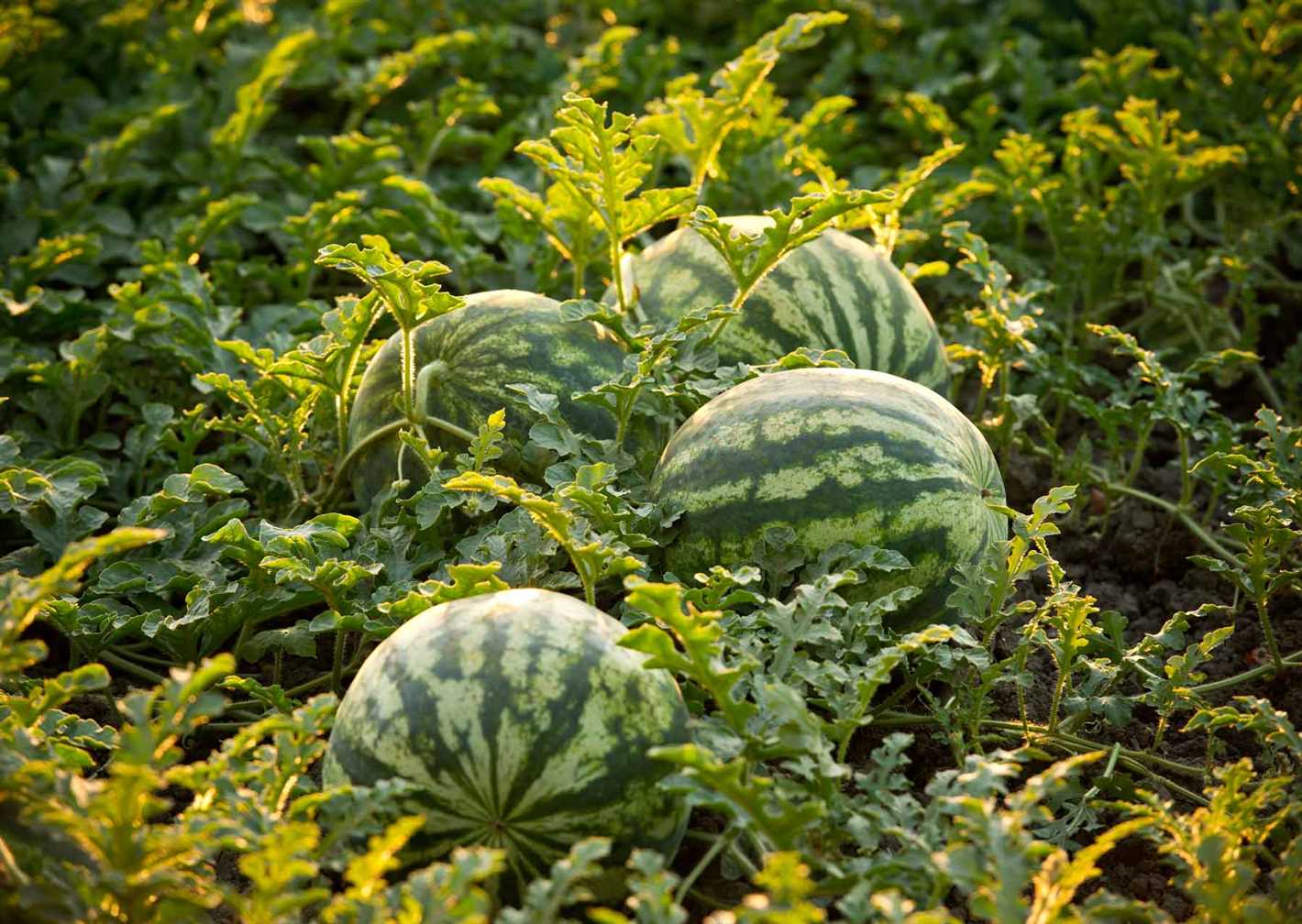
Watermelons also require micronutrients like iron, zinc, and manganese for optimal growth. These can be applied as foliar sprays or through soil amendments, depending on the nutrient deficiency observed.
6. Application Schedule
It is best to divide the total amount of fertilizer recommended into several applications throughout the growing season. Apply the first round of fertilizer before planting, and subsequent applications every 4-6 weeks thereafter.
Remember to always follow the instructions provided on the fertilizer packaging, as different brands and blends may have different application rates.
7. Watering After Fertilizer Application
After applying fertilizer, it is important to water the plants thoroughly to ensure proper nutrient uptake. This will also help prevent fertilizer burn.
By following these fertilization guidelines, you can maximize the growth and yield of your watermelon plants even in a harsh climate.
Harvesting the Giant Watermelon
After putting in all the hard work to grow a giant watermelon in a harsh climate, it’s finally time to harvest your prized fruit. Here are the necessary steps to ensure a successful harvest:
1. Monitor the Ripeness
Keep a close eye on the watermelon as it matures. Look for signs of ripeness such as a dull or matte skin color, a yellow or cream-colored underside, and a dried-up tendril near the fruit’s stem.
2. Prepare the Tools
Gather the necessary tools for harvesting, including a sharp knife or pruning shears, gloves, and a cart or wheelbarrow to transport the heavy fruit.
3. Choose the Right Time
Watermelons are best harvested in the morning when the temperatures are cooler. This helps to preserve the flavor and quality of the fruit.
4. Cut the Stem
Using your knife or pruning shears, carefully cut the stem about 1 inch above the fruit. Be sure not to damage the watermelon while cutting.
5. Lift and Transport
Gently lift the watermelon from the ground, supporting it with your hands to distribute the weight evenly. Place the fruit in your cart or wheelbarrow for transport.
6. Store Properly
Once harvested, clean the watermelon with a damp cloth to remove any dirt or debris. Store the fruit in a cool, dry place with good air circulation to extend its shelf life.
By following these steps, you can successfully harvest your giant watermelon and enjoy the fruits of your labor. Remember to share the experience with family and friends and savor the delicious taste of your hard-earned harvest!
“Question-Answer”
Is it possible to grow a giant watermelon in a harsh climate?
Yes, it is possible to grow a giant watermelon in a harsh climate by following specific instructions.
What are some tips for growing a giant watermelon in a harsh climate?
Some tips for growing a giant watermelon in a harsh climate include selecting the right variety, providing adequate sunlight and water, using protective coverings, and controlling pests and diseases.
Which variety of watermelon is best suited for growing in a harsh climate?
The Black Diamond variety is considered one of the best options for growing in a harsh climate due to its heat tolerance and ability to produce large fruits.
How much sunlight is required for growing a giant watermelon?
A giant watermelon requires at least 8 hours of direct sunlight per day to thrive and produce large fruits.
What are the steps involved in growing a giant watermelon in a harsh climate?
The steps involved in growing a giant watermelon in a harsh climate include selecting the right variety, preparing the soil, planting the seeds, providing regular watering, using protective coverings, pollinating the flowers, and providing proper care and maintenance.
How long does it take for a giant watermelon to reach maturity?
A giant watermelon usually takes around 80-90 days to reach maturity and be ready for harvest.







